Tourism is at a crossroads, facing the challenge of balancing growth with sustainability. Over the past two decades, the number of international tourist arrivals more than doubled, surpassing 1.4 billion in 2019. While this tourism boom promoted economic growth and personal fulfillment, it often came at the expense of the environment and local communities. As tourism surged, it came hand in hand with gentrification, crowded streets, pollution, and habitat loss.
In recent years, destinations began implementing measures to combat the burdens of unsustainable tourism: Hawaii banned the sale of reef-toxic sunscreens, Dubrovnik limited the number of cruise ships that can dock each day, Palau protected 80% of its waters, and Barcelona cracked down on illegal vacation rentals. While these are certainly steps in the right direction, there’s still much more to be done.
According to research by Booking.com, 76% of travelers say they want to travel more sustainably. While this shifting mindset is a promising sign many travelers don’t know where to begin.
You can be part of the solution by adopting more responsible travel habits and supporting companies that are taking action. In this blog post, we offer guidance on what sustainable travel looks like in practice. By rethinking the way we travel, we can realize a future where tourism protects and respects our planet and its cultures. Read on to discover our top tips for eco-friendly and socially conscious travel.
Free Resource: Download our Sustainable Travel Tips List and keep it handy when planning trips to engage in more responsible travel.
What is sustainable tourism?
Before we go any further, it’s important to clarify what we mean by sustainable travel.
While people often think of sustainability as minimizing our environmental footprint, it is much broader and all-encompassing than this. Sustainable tourism is all about achieving a balance between economic growth, human well-being, and environmental health. It focuses on reducing tourism’s negative impacts and on maximizing its positive benefits for communities, cultures, ecosystems, and the planet. Sustainable tourism accounts for both the immediate impacts felt today as well as those longer-term impacts that will be experienced by future generations.

You’ve probably seen other buzzwords such as “ecotourism,” “regenerative travel,” “community-based tourism,” “ethical travel,” or “nature-tourism” and wondered how they differ from “sustainable tourism.” Without getting into the nuances of each, these terms tend to be narrower in scope and focus on specific applications or aspects of sustainable tourism. For instance, ecotourism specifically focuses on responsible travel to natural areas, while regenerative travel focuses more on leaving places better than they were before and repairing damage that has already been done.
How to start traveling more sustainably
While it’s one thing to understand what sustainable travel means, it’s another to actually put it into practice. That’s why we’ve rounded up our top ten tips for sustainable travel to help you be a more eco-friendly and socially conscious traveler. As you read, think about which practices you can adopt when you travel.
1. Get off the beaten path
Prior to the pandemic, many destinations were literally being loved to death as they became victims of their own popularity. Historic cities, beaches, and other tourist hotspots were being overrun by hordes of visitors, a phenomenon that is now known as “overtourism.”
As a traveler, you can help prevent a resurgence of overtourism by skipping tourist traps and getting off the beaten path. While it may be tempting to go to the same bucket list destinations that everyone is Instagramming, it can be even more rewarding to explore less traversed places. The reality is that many tourist hotspots don’t live up to their expectations – you may have to spend hours standing in line, only to discover that the destination doesn’t look the same in person as it did online.
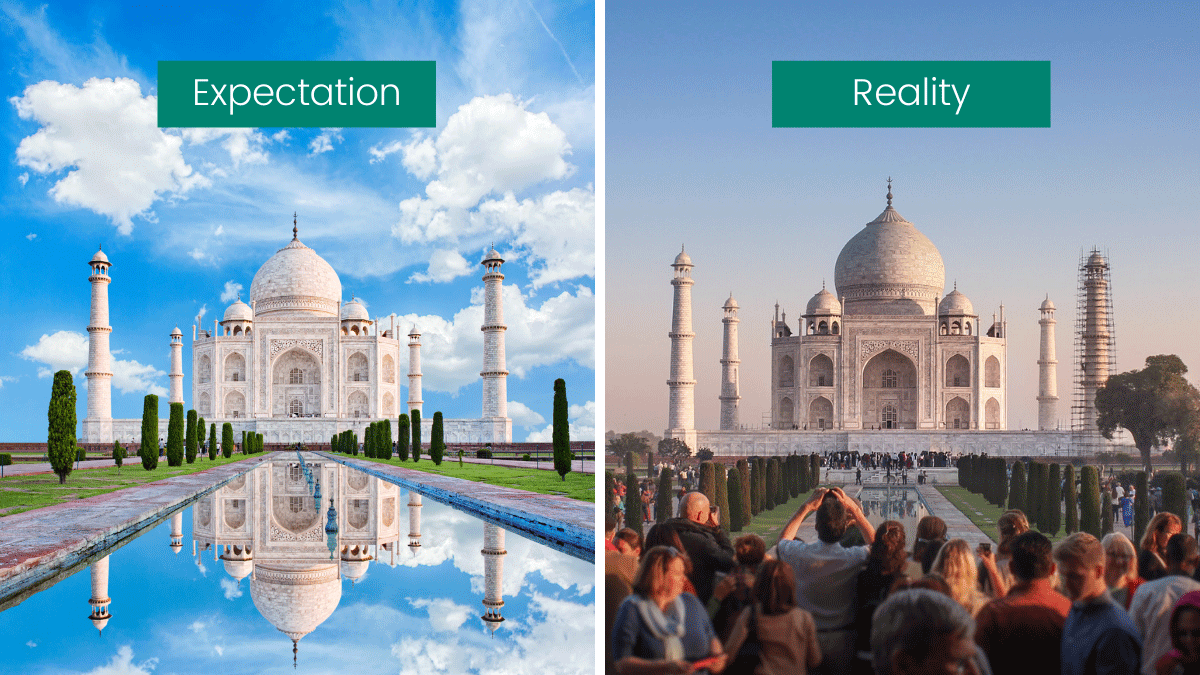
Getting off the beaten path allows travelers to have a more unique and authentic experience while avoiding the crowds. This doesn’t mean you have to pitch a tent in the middle of nowhere, but it does require that you do some extra research. Look beyond the “Top 10” destinations and attractions lists, explore Google Maps, or ask locals or other travelers for recommendations. Instead of staying in major tourist centers, visit smaller cities or head to a more rural area. Doing so will reduce the burden on over-visited destinations, while spreading tourism benefits to other local communities. If you travel by cruise, opt for a small ship cruise line. Because these boats carry less passengers and are able to visit smaller ports, they alleviate pressure on common cruise destinations. If you are dying to go to a popular destination, consider scheduling your trip during the off-season. Check out this website which helps predict the best times to avoid the crowds.
2. Slow down and stay awhile
It can be easy to get caught up trying to cram as much as possible into a trip. After all, this may be the only time you visit the destination. Though a packed itinerary may seem ideal on paper, you’ll likely spend the majority of your vacation rushing from one place to another. While you may tick off lots of bucket list sights, you’ll miss out on actually getting to know the destination. Not to mention, this fast-paced “hit and run” style of tourism is a surefire recipe for stress.
Do yourself a favor and give yourself more time to explore the destination. Instead of taking multiple shorter trips each year, opt for just one longer vacation. Once you’ve reached your destination, park yourself in one area for a while instead of hopping from one place to the next.
Slowing things down will allow you to really experience the place you are visiting. When you aren’t rushed, you can take time to immerse yourself in the culture, build deeper connections with local people, and get to know the destination’s unique charms. Take a cooking class to taste the local flavors and learn how to make traditional dishes. Spend a day walking or cycling around town and you’ll be sure to discover hidden gems like a quirky local coffeehouse. Meander through a museum and arm yourself with a mountain of fun facts.
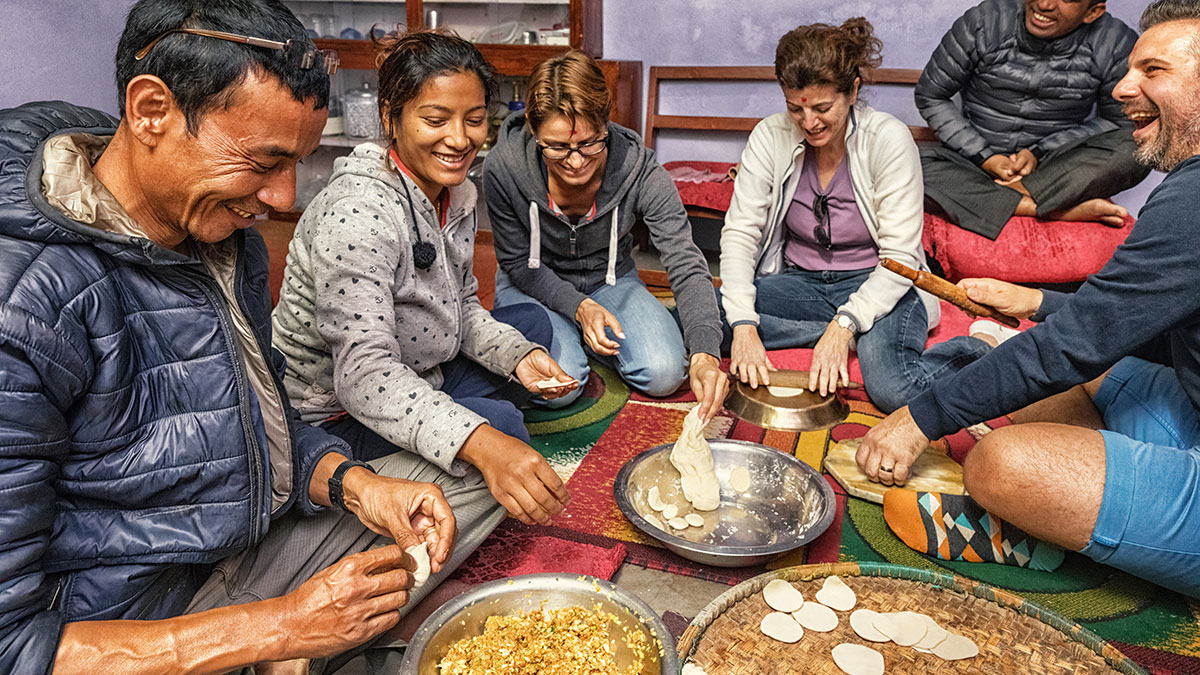
Spending more time in a destination makes for more authentic, memorable, and meaningful travel experiences. At the same time, it reduces pressure on the cities and communities you visit while creating greater benefits for the local businesses you support. An extra bonus: slow travel is also better for the environment since it reduces the amount of carbon emissions generated by flying or driving between destinations.
3. Use efficient modes of transportation
In addition to traveling slow, there are other ways that you can reduce the carbon emissions produced by your trip. Approximately 8% of the world’s carbon emissions are caused by travel and tourism. As such, the travel industry is a significant contributor to climate change, which is one of the gravest threats to the future of tourism, people, and the world.
Air travel, driving, and other forms of transportation make up the largest part of tourism’s carbon footprint. Though all modes of transportation require energy, some are more efficient and cleaner than others. How you get to/from and around your destination makes a difference.
In general, planes and cars tend to be the least efficient modes of transportation. When vacationing to closer destinations, travel by train or coach to cut your emissions while soaking in the scenery. Once you’re in your destination, consider taking the bus, traveling by rail, or cycling around town instead of renting a car. If you do rent a car, opt for an electric, hybrid, or smaller model.
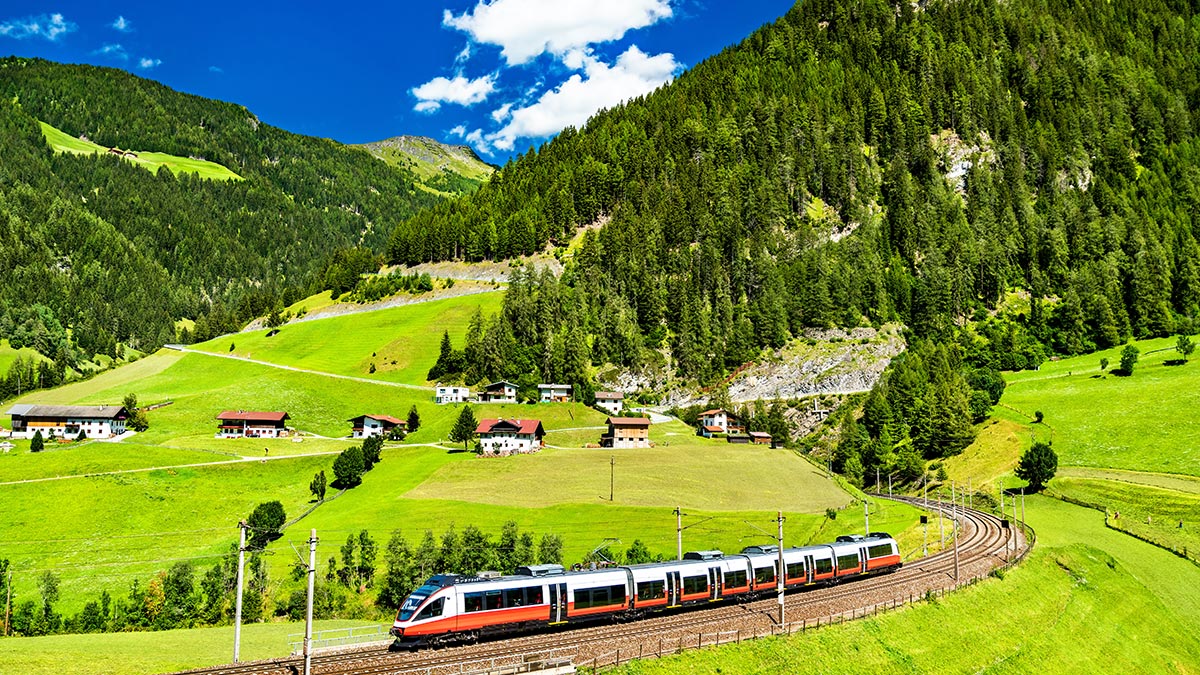
Keep in mind that there’s no one-size-fits-all guideline for which method of transportation to use since the carbon footprint also depends on the type of energy being used. The most sustainable option will vary from one destination to the next. Trains in the Netherlands are powered by wind energy, Washington D.C. has zero emissions buses, and some of Thailand’s infamous tuk tuks are going electric. Research the different transportation options in the destination you are visiting to make an informed decision.
> Discover more ways to reduce your carbon footprint.
4. Conserve water and energy
Beyond transportation, tourism also relies on energy for heating, lighting, and electricity. This along with intensive water use by tourists can put great strain on local water supplies and energy infrastructure. Tourists often consume significantly more water and energy than local residents and many destinations struggle to keep up with the demand. As global temperatures rise and the population grows, it will exacerbate this problem even further.
When you’re on vacation, do what you can to conserve local water and energy resources. Turn off the lights, TV, and any other electronics when not in use. When leaving your hotel, turn off the AC or set the thermostat a few degrees higher. Take a shower instead of a bath and keep it as short as possible. Handwash your own clothes and hang up the “Do Not Disturb Sign” to prevent unnecessary laundering.
You can also reduce your environmental footprint by staying in a low impact accommodation. This could either be a smaller, more basic accommodation or a higher-end property that utilizes renewable energy and water/energy efficient technologies.
Free Sustainable Travel Tips List
5. Offset your carbon footprint
While you should always do what you can to minimize your energy usage, some carbon emissions will remain unavoidable. You can compensate for these inevitable greenhouse gas emissions through a process known as “carbon offsetting.”
Carbon offsetting allows you to balance out the carbon footprint of your trip, by reducing emissions somewhere else in the world. All you have to do is calculate your carbon footprint using an online carbon calculator, then purchase offsets equivalent to the amount of CO2 you produced. The money from your offset purchase will be invested in projects that reduce carbon and other greenhouse gases. For instance, one project may protect a tropical rainforest from being cut down, while another might build a wind farm or convert cow manure into energy. Carbon offset projects can also create benefits that go beyond emissions reductions, such as creating local jobs, improving sanitation, or conserving endangered species.
When offsetting your footprint, just be sure to go through a reputable provider to ensure you’re creating the greatest impact.
> Get started offsetting your carbon footprint.
6. Keep your dollars local
Many communities are hurting from the lack of tourism over the past year. You can help them bounce back by making sure your dollars stay in the local economy.
The best way to ensure host communities reap the benefits of tourism is by supporting local businesses and entrepreneurs. Consider staying in locally-owned homestays and guesthouses rather than expat-owned hotels or international chains. Dine at local restaurants and savor traditional dishes made with locally-sourced ingredients. Get out of your comfort zone and have some fun navigating the local market – buy spices grown by a local farmer or purchase jewelry made by a local artisan. Although haggling is expected in many cultures and okay to do, don’t be stingy and pay a fair price. Book excursions led by local guides or learn a new skill from a local expert by signing up for a weaving workshop or surfing lessons. If you book a packaged tour, choose an operator that prioritizes local suppliers.
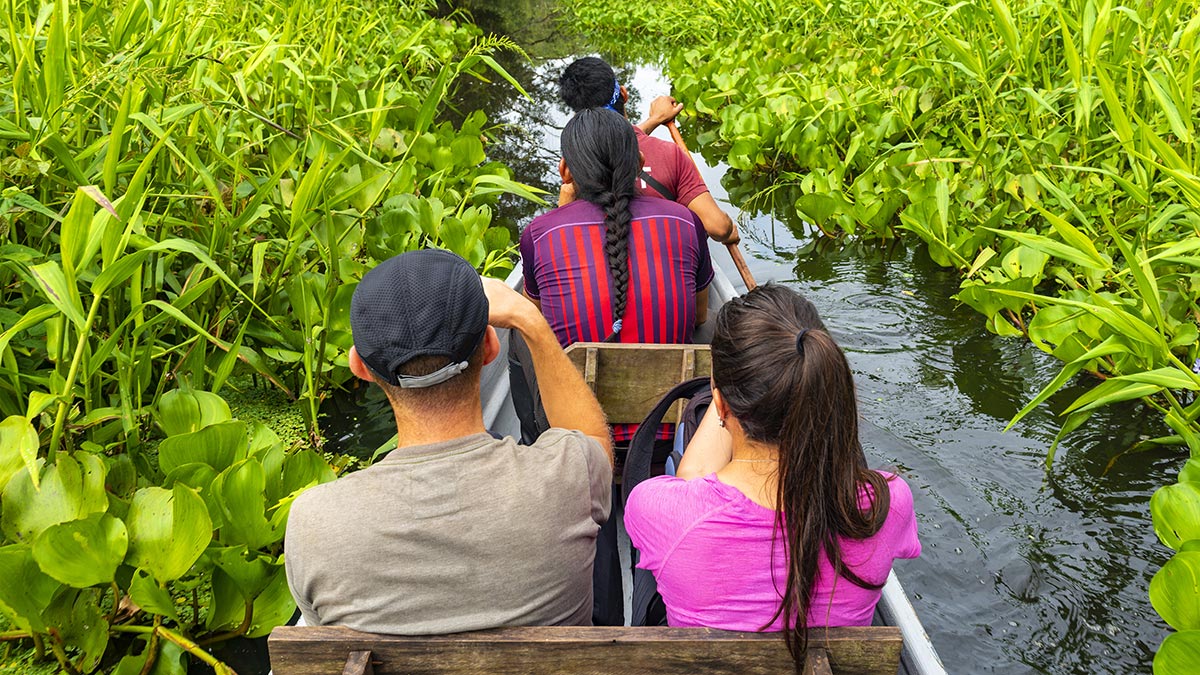
While it may be tempting to give money to beggars, it’s best to avoid this practice as it often causes more harm than good. At its worst, begging can be a form of human trafficking and travelers’ well-intentioned gifts can perpetuate a system that keeps children out of school and forces them onto the streets. Even if this isn’t the case, giving money to beggars can fuel a dependence on tourist handouts. A better alternative is to make a contribution to a local charity that empowers people through skills development, education, micro-loans, or access to social services. You can help promote the equitable distribution of wealth by patroning businesses that are owned or managed by marginalized groups such as women, indigenous populations, or minorities.
7. Respect local communities
One of the incredible things about travel is that it offers a glimpse into other traditions, beliefs, and ways of life. Seize this opportunity to expand your horizons by embracing the differences and soaking up the local culture.
Begin immersing yourself in other cultures by reading up on the local history, traditions, and etiquette before visiting. Download a language app and learn a few phrases in the local language. Be aware that certain gestures, clothing, or words are considered offensive in some destinations. Be especially mindful when visiting religious or spiritual sites. Only go to sites where tourists are welcome and adhere to any protocols. At some sites, this may mean taking off your shoes, covering your shoulders, keeping your voice down, or not taking photos.
Wherever you go, remember that the destination you are visiting is someone else’s home. Obey the local laws and guidelines, from traffic rules to health and safety precautions. Do your best to leave places like you found them so that future generations of travelers and residents can enjoy them too. A little bit of respect goes a long way – be considerate of local people and treat them with dignity. This includes honoring their privacy and asking permission before you take their photo.
8. Avoid single-use plastics
Every year, 8 million metric tons of plastic ends up in our oceans. This is equivalent to one garbage truck full of plastic being dumped into the ocean every single minute of every single day. In recent years, a growing number of consumers, companies, and governments started rejecting single-use plastics. But over the past year, single use plastics made a comeback as the pandemic led to an increased reliance on plastic gloves, takeout containers, packing bubbles, and grocery bags. As tourism recovers, many hotels and tour operators are reinstituting disposable plastics as an added hygiene precaution. But many countries lack sufficient waste management infrastructure to keep up with the amount of plastic trash that is produced by tourists and locals. As a result, plastics end up in overflowing landfills or dumped in the environment where they can remain for hundreds of years. With the increased reliance on plastics due to COVID, it’s even more important to cut down your own consumption when you travel.
One of the most common plastic items used by tourists is single-use beverage bottles. Luckily, there’s a simple solution: bring your own reusable water bottle on your trip! If you’re worried about the water quality in the destination you’re visiting, bring a water bottle with a built-in purifier. Refillable toiletry bottles are another eco-friendly item to add to your packing list.
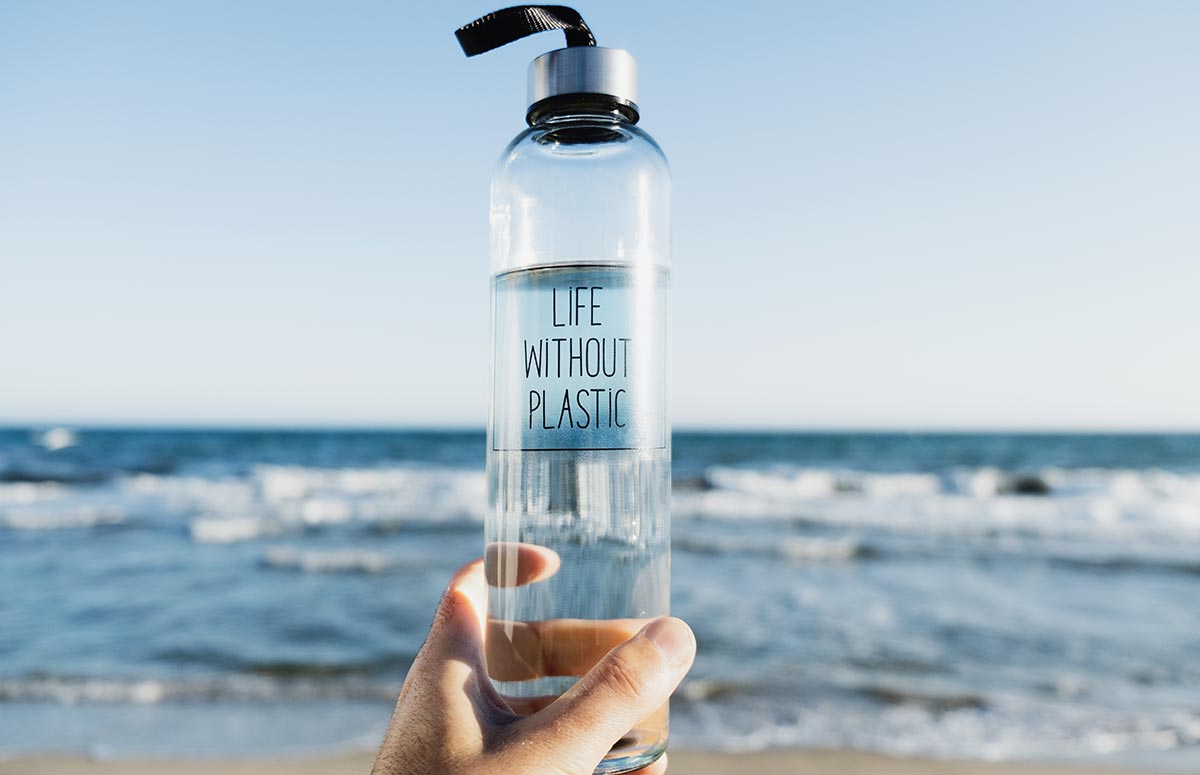
Another easy way to reduce plastic waste is by changing your eating habits. When going to a restaurant, dine-in rather than getting takeout which typically comes with plastic bags, containers, cups, and utensils. Hit up the local street food scene, but opt for vendors that dish up their goodies in biodegradable alternatives. Some travelers also choose to bring their own reusable container and utensils. In general, it’s best to eat fresh, local foods or drinks instead of imported ones which tend to use more packaging. Even something as simple as asking the bartender to skip the straw can help trigger larger operational changes.
9. Visit parks and protected areas
National parks, marine sanctuaries, and other protected areas play an important role in protecting our planet’s natural resources and biodiversity. Many countries rely on tourism fees such as entrance fees, operator permits, or bed levies to preserve these special places and animals. Every year, more than 8 billion people visit the world’s protected areas, generating about $850 billion in spending. These dollars help fund the conservation activities necessary to protect these areas while also providing income to local communities.
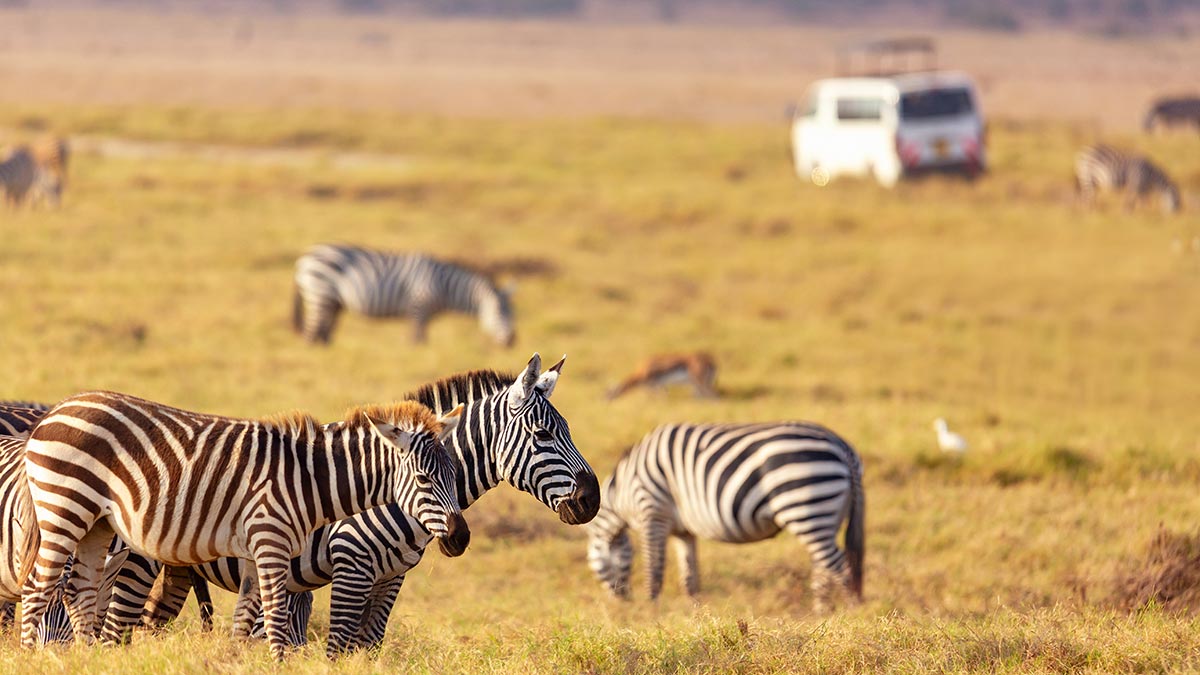
The pandemic essentially cut off this revenue stream, putting many protected areas and endangered species in jeopardy. Over the past year, there have been an alarming number of reports of increased poaching and illegal deforestation around the world. Rising poverty has only compounded the problem as local communities resort to destructive activities for income and sustenance.
As you’re planning your post-COVID travels, look up the protected areas in your destination and add one to your itinerary. When visiting any natural area, be sure to minimize your impact by acting in a responsible manner. Avoid degrading sensitive environments or disturbing wildlife, comply with all visitor guidelines, and follow the Leave No Trace Principles. Along with paying any usage fees, be sure to support local communities by booking local accommodations and service providers.
> Learn more about how tourism benefits nature and wildlife.
10. Choose sustainable accommodations and operators
Our final tip focuses on how you can drive businesses to change their practices and help to mainstream sustainable travel. The best way you can influence the industry is by seeking out businesses that are lessening their environmental impact and contributing to the well-being of local communities.
While many companies have embraced sustainable travel, there are still plenty of businesses that don’t see the value. Let them know that sustainability matters to you by putting your money where your mouth is. Keep in mind that just because a company markets themselves as ‘green’ or ‘sustainable’ doesn’t mean they necessarily are. Look for information about the specific practices and policies that they’ve implemented, and ask questions to show that you’re factoring sustainability into your purchase decisions. What energy and water conservation practices do they have in place? Have they eliminated single-use plastics? How do they promote diversity and inclusion? Do they hire local people for management roles? Do they prioritize local suppliers and producers? Do they promote responsible interactions with wildlife?
If you notice other practices that the business could adopt, be sure to share your feedback. You can also write online reviews or share your experience in our Travel Better Facebook Group to help other travelers identify sustainable businesses.
We hope you enjoyed these tips and are feeling inspired for your next trip! Click here to sign our Travel Better Pledge and join the sustainable travel movement.
Free Sustainable Travel Tips List

